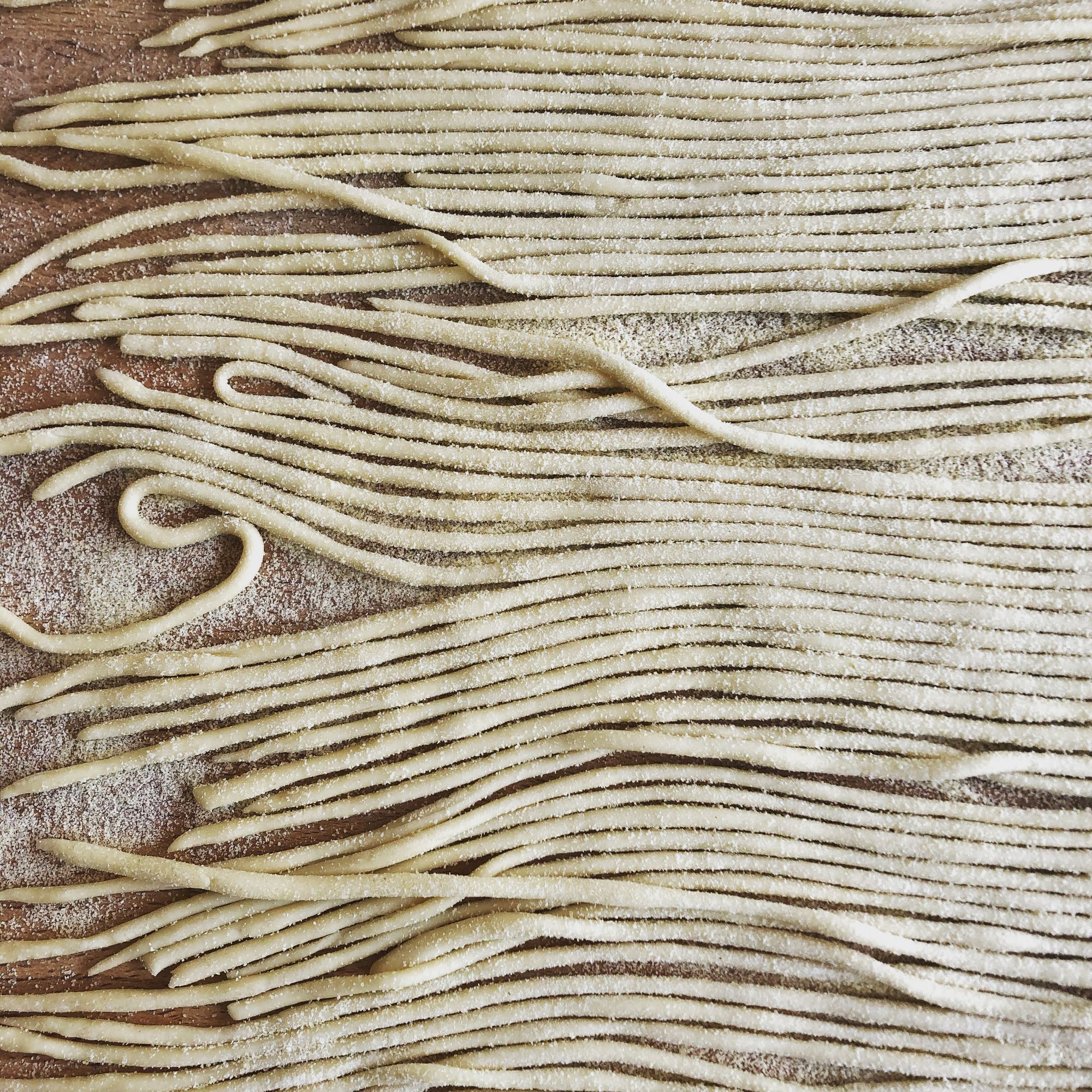Recipe: Pici all'aglione, and a Closer Look at a Tuscan Classic

What are Pici?
A long hand-rolled pasta that are a little like really thick spaghetti. It doesn't sound very appetising but when I explain what pici are to our guests, an easy description is 'worm-like'!
They are typically an eggless pasta, made purely of flour, water and a little olive oil. Pici are especially prevalent in inland Tuscany around Siena. The hand-rolled nature of them means they are rarely completely even or straight, and this imperfection is what pici are all about! It's a rustic and robust pasta, even the absence of egg points to a foodstuff that was cheap and the essence of 'cucina povera' - food born out poverty and created by frugal ingenuity.

The roots of pici could date back a very long way. There are apparently Etruscan depictions of something resembling them on tombs that date back to hundreds of years before christ.
The thickness, as well as the flour and water-based dough gives them a satisfying chew. As a general rule, the less refined and more robust a pasta shape is, the more it demands a sauce that is equally hearty. Pici are commonly found served with full-bodied sauces involving sausage, wild meats, truffles, and most famously all'aglione - a sweet garlicky tomato sauce.
What's aglione?
To be a proper aglione sauce you are supposed to use a particular type of garlic, in English we call it Elephant Garlic. It has larger cloves and is less pungent than normal garlic...less aggressive in its flavour and sweeter. You can pump your tomato sauce full of this beautiful stuff without the garlic being overpowering. That said, if you can't find it, just use normal garlic; the key is to cook it very slowly in olive oil so it breaks down and becomes mushy and sweet.

The pairing of this sauce with pici is a dream, so well balanced that traditionally it is even frowned upon to serve it with cheese, which could distort the natural and simple marriage of sauce and pasta. I'm afraid I'm a sucker for parm on my pasta so I couldn't resist ;)
How do you make the pasta?
Pici are pretty simple really. The dough consists of semolina flour and water to a 2:1 ratio, a glug of good extra virgin olive oil helps with elasticity too. In the pictures here I used wholemeal flour as well as white flour, but traditionally they are made with white semolina flour. You won't need more than 150g of pici per person - so 100g flour, 50g water.
Knead the dough well, rest well, then roll it out, bit by bit on the widest setting of your pasta machine. Cut the sheet into vertical strips, somewhere between tagliatelle and parpadelle width. Roll each strip on a surface with both hands, gradually creating a thin worm-like pici. As you roll, gently apply pressure where the pici are thicker to try and make the width not too inconsistent. You don't want them too thick as they will grow when cooked too! There is a bit of a knack to rolling these out and making them not too wide, whilst also managing not to break them, but you'll get the hang of it soon enough. Practice makes perfect!
Watch our pici-making video on YouTube: HERE
And the sauce?
This is a super simple sauce. As the elephant garlic might be hard to find, for the instructions I'll stick to the standard stuff. There are three main ingredients, good tomatoes, garlic, and extra-virgin olive oil. You can also throw some chilli flakes into the mix if you are so inclined.
Use 2 good sized garlic gloves per person, and 400g tinned or chopped fresh tomatoes for every two people.
The secret here is doing everything very slowly. Cook the garlic cloves whole, in plenty of good olive oil on the lowest of low flames, until they are soft and you can mash them. Squish the garlic up a little once you're at this stage and allow it infuse and melt into the oil.
Add your tomatoes and enough water to fill around half an empty tin of tomatoes (if you're making the recipe for 4 people). Simmer until thick and unctuous, the sauce should be quite dry and starting to sizzle a little on the base of the pan. This could take 20-30 minutes. Season well with salt and pepper. Mix with the cooked pasta and a ladle of the pasta cooking water. Enjoy!
